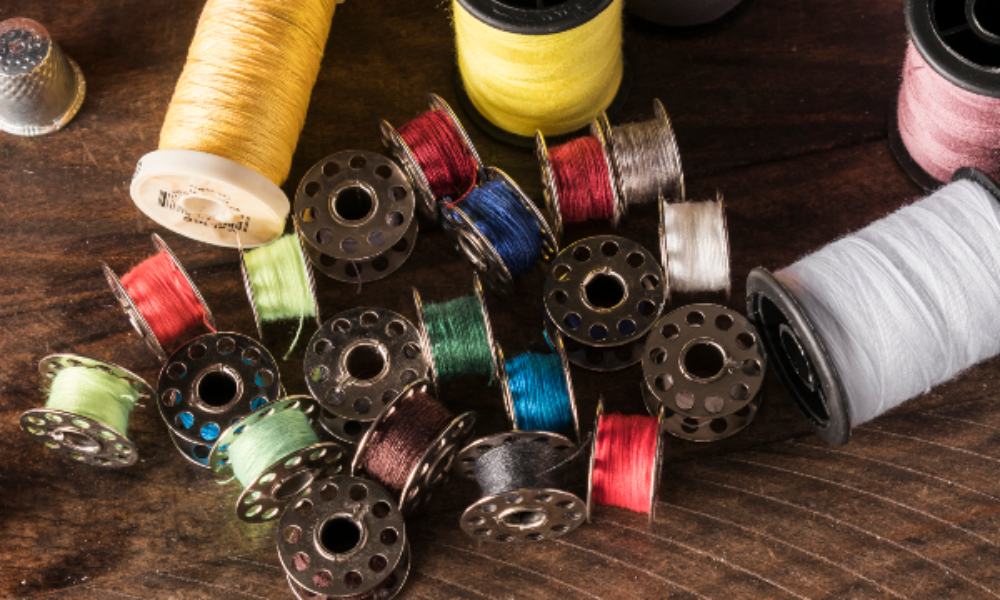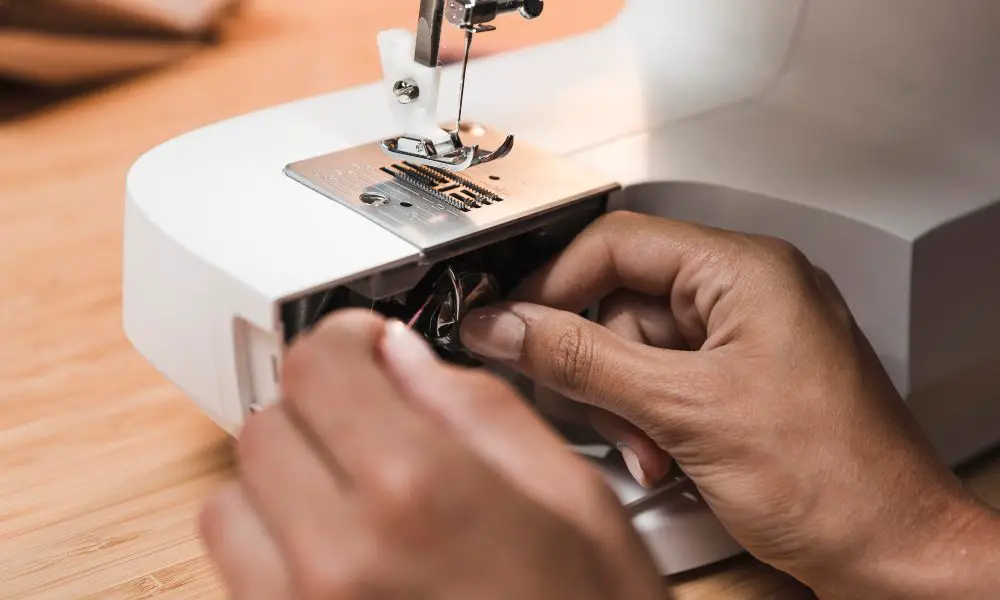Have you ever sat down at your trusty Singer sewing machine, pressed the foot pedal, and heard the motor’s familiar whir running, but nothing moves no matter how hard you step on the pedal? No stitching happens at all, even though the engine is clearly on. This frustrating issue can occur in any new and old sewing machine. But don’t worry; a few common culprits usually cause a sewing machine motor to run without movement. The initial step in achieving smooth operation of your Singer sewing machine is pinpointing the underlying issue.
Common Causes

One of the most common reasons your Singer’s motor runs but nothing moves is because the bobbin winder is still engaged. The bobbin winder is the small turbine-looking mechanism on the top right of the sewing machine. When confronted, this part holds the drive mechanism in place to allow the winding of a bobbin thread onto the bobbin. If you’ve wound a bobbin and forgotten to disengage the winder, the drive will be locked even when you press the foot pedal. Simply slide the bobbin winder to the left or push the lever to pop it back up to disengage. Then try the foot pedal again – your Singer sewing machine will likely start stitching. It’s just a simple fix!
A broken or worn-out drive belt is another prime suspect for motor running with no movement. The drive belt links the motor to the needle and bobbin mechanism. The power produced by the engine is transmitted by the drive belt. It’s a long, narrow rubber belt that can become brittle, stretched out, or even snap after years of heavy use on a sewing machine. Replacing a broken drive belt on most Singer machines is relatively easy. Simply flip your machine over or open the cover plate to access the belt. Unloop the old belt, loop a new one into place, and everything should work smoothly again. Drive belts are inexpensive, and replacing them can save on repair costs.
Sometimes, built-up lint, fuzz, stray threads, and even stuck pieces of fabric can jam up your Singer sewing machine’s inner workings enough to stop movement even as the motor runs. When too much debris builds up inside the old or new machine, the drive mechanism cannot turn properly. The fix is thoroughly cleaning your machine and lubricating any moving metal parts. Refer to your manual for instructions on opening covers and safely accessing the mechanism. Make sure to unplug the machine first! It is recommended to utilize a brush of a smaller size to eliminate any accumulated lint. Then, try turning the hand wheel and maneuvering parts to loosen any stuck bits. Applying fresh sewing machine oil or lubricant will help prevent jams as well. With a good cleaning and lube, your Singer should be freed up and back to stitching quickly.
Less Common Causes
While it’s less often the culprit, an electrical issue can also cause a motor running but no movement problem on a Singer sewing machine. If there is a problem with the motor, wiring, and foot control pedal, the engine may try to turn on when pressed but not engage the drive mechanism. Issues with the foot control, speed control, or any other electrical parts can also lead to this. Electrical problems require the expertise of an appliance repair specialist. They can test components with a voltmeter, check electrical connections, and determine if anything needs to be replaced. If other troubleshooting has yet to work, electrical issues may be why your Singer’s motor runs, but nothing moves.
The precisely cut interior metal gears translate motor power into needle movement on a sewing machine. If these gears become stripped or damaged on an older machine, the motor may still run, but the power isn’t transferred to make your machine sew. Replacing damaged gears inside a Singer requires some mechanical expertise. A sewing machine repair shop can inspect the gear teeth and replace any worn-out or stripped gears so everything connects appropriately again.
The various discs, springs, tension dial, and tiny parts of a sewing machine’s tension assembly are also crucial for proper functioning. Any issues here can lead to motor running but no movement. The tension assembly controls how the top thread and bobbin thread are fed. No stitching will occur if the tension parts like discs or springs slip, hang up, or fail to move the threads along. A seized-up or malfunctioning tension assembly should be inspected and repaired by a sewing tech to get your Singer machine sewing properly again.
FAQs:
Why does my Singer sewing machine motor run, but nothing moves?
The most common causes are an engaged bobbin winder, broken drive belt, jammed mechanism, electrical issue, damaged gears, or problems with the tension assembly.
How do I disengage the bobbin winder on my Singer sewing machine?
Locate the bobbin winder on the top right. Slide the winder to the left or push the lever to pop the winder up and disengage it.
Where is the drive belt on a Singer sewing machine?
The drive belt is under the cover plate or base cover. Flip the machine over or remove the plate to access it.
How do I clean out my Singer sewing machine?
Refer to your manual on how to open covers safely. Use a small brush to remove the lint. Carefully loosen any stuck debris. Apply sewing machine oil to lubricate.
Does my Singer sewing machine need electrical repair?
If other fixes don’t work, an electrical issue may be the cause. An appliance repair tech can test components to diagnose.
What is the cost of repairing a Singer sewing machine?
Costs vary depending on the repair. Simple drive belt replacement is inexpensive DIY. Electrical issues or part replacements may cost $70-$150+ from a sewing machine repair expert.
Conclusion
When your Singer sewing machine’s motor is running, but nothing is moving, there are a few common mechanical culprits to check: bobbin winder, drive belt, and jammed mechanisms. It’s worth noting that if your vintage or modern machine experiences electrical problems, stripped gears, or tension issues, you may need to take it to a repair shop. You can recover your Singer stitching smoothly with the correct diagnosis and repair.
Has this frustrating issue happened to your Singer or other brand sewing machine before? What was the cause, and how did you get your machine moving again? Let me know in the comments!
***
Main image: freepik.com




